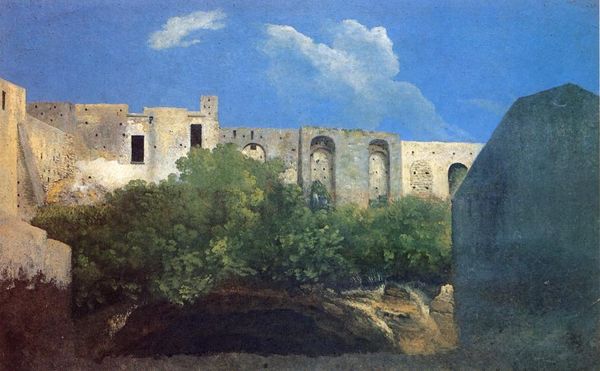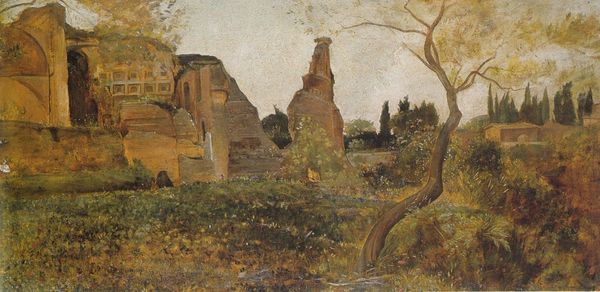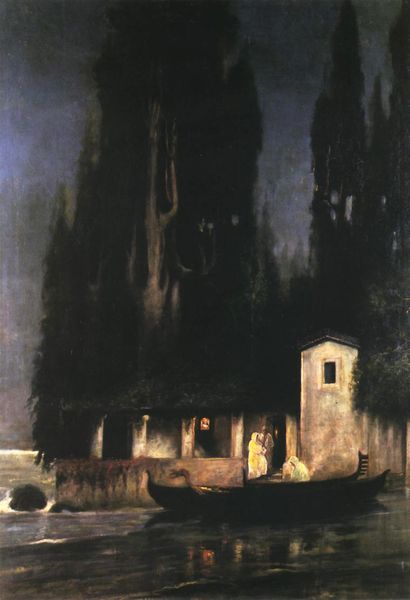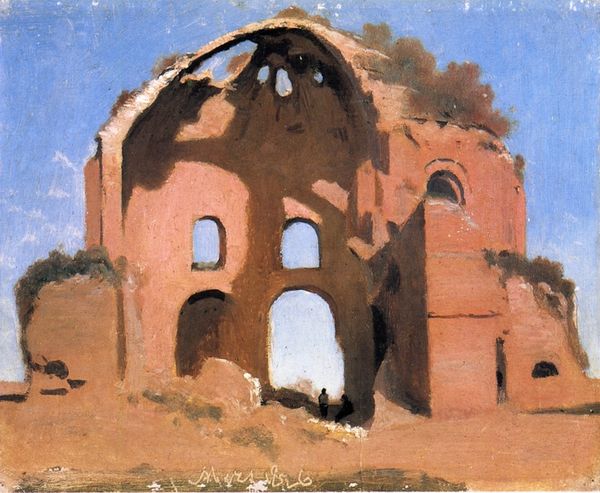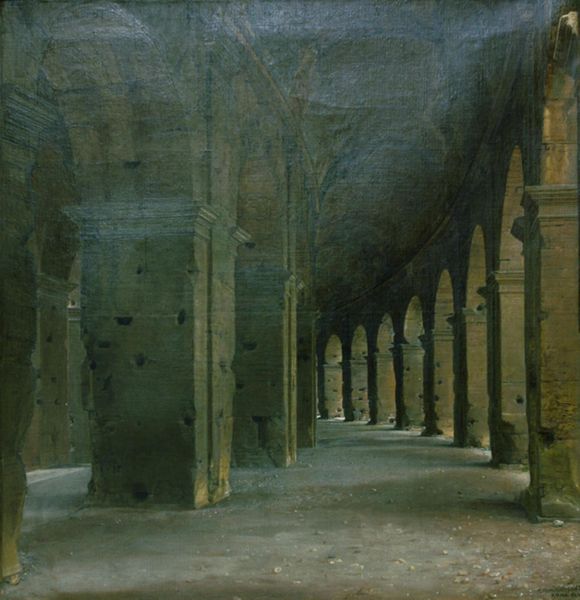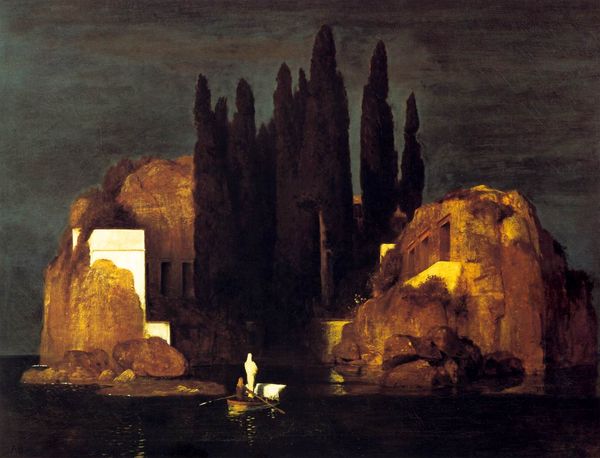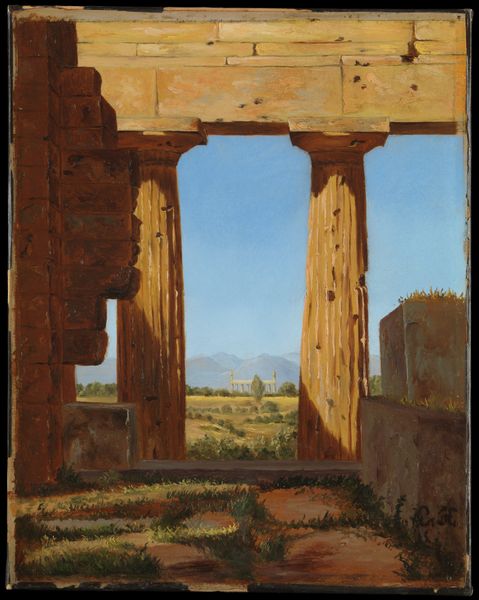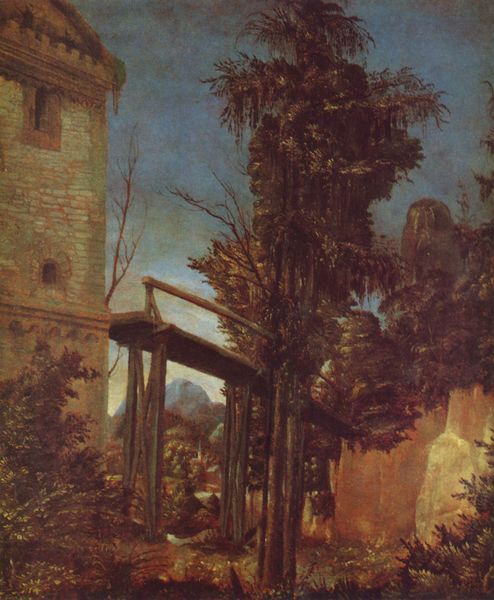
Copyright: Public domain
Editor: Here we have Thomas Jones’ "The Grotto at Posillipo" from 1872, an oil painting. There’s a real stillness to it, a kind of hushed quality, and I’m immediately drawn to the contrast between the light and the dark shadowed doorway. What do you see when you look at this piece? Curator: You know, that's what struck me, too, that beautiful hush. It’s a really intimate study of light and shadow, isn't it? Look how the grotto almost glows. It feels like stepping back in time. Jones, influenced by Romanticism, wasn't just painting a place; he was capturing a feeling, a memory of the classical world slowly decaying, returning to nature. Do you see the soft, almost melancholy way he renders the ruins? It makes me think of time's relentless passage, the way beauty lingers even in decay. Almost makes you want to reach out and touch it, doesn’t it? Editor: Absolutely. I was so focused on the doorway, I nearly missed the sense of decay you mentioned. It’s there, though, subtly… a very quiet painting, almost secretive. Curator: Exactly! It invites you in, whispers secrets only the stones remember. It is as though you could dive deep into the scene and discover stories from times forgotten. Do you suppose someone used that little window for clandestine activities? Editor: That's an intriguing idea! I'm finding myself pondering the human element in this nature-dominated scene. I've completely changed how I perceive the artwork; your reading gave a historical and narrative dimension that I failed to initially appreciate. Curator: It’s all a matter of perception, my dear, as ever! Art reflects and refracts, much like ourselves, no?
Comments
No comments
Be the first to comment and join the conversation on the ultimate creative platform.
